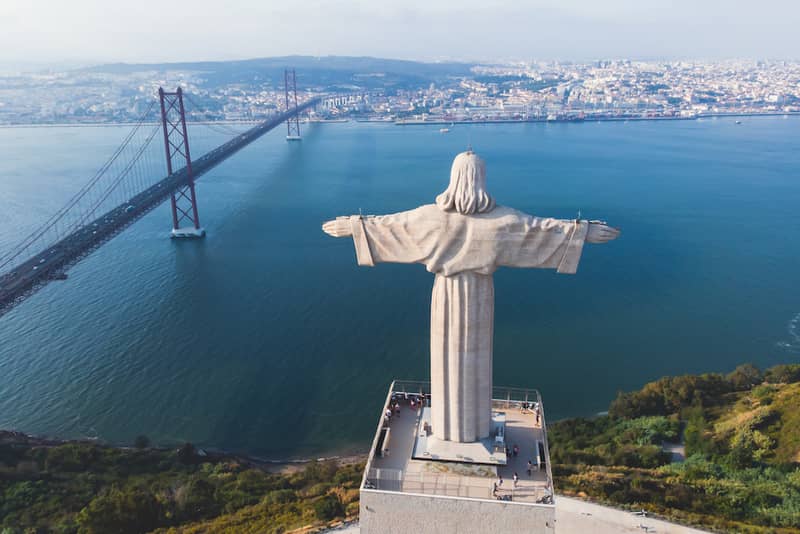Interesting Facts about Lisbon
From the moment you enter the skies above Lisbon you will start to see its beautiful architecture and just how amazing the city is. Once you touch down and get off the plane, the fascination only grows. The city is full of everything and anything a traveler might want from historical sights to places to have a great time. When you come to Lisbon there is so much to do but only some of it you will find if you take to just walking down the street.
Lisbon has a lot of hidden and lesser known facts. Today we are going to take a look at some of those facts to help make your stay, no matter how long or short it is, all the more enjoyable.
Among The Oldest Of Europe
So many people are surprised to hear that Lisbon is actually one of the oldest cities in Europe. If you pay attention while traversing the city though, you will see plenty of evidence that supports that. Classical architecture, beautiful art, and a classic culture greets you everywhere you go.
Not just is it one of the oldest cities in Europe, it is among the oldest cities in all of the world.
The Symbol of Lisbon
Lisbon has its own symbol, the Raven is considered to be the symbol of the city. It stems from legend in the area that two ravens came with the body of Sao Vicente when he was transported to Lisbon in 303 AD. Some might find this bird a bad omen but the city loves their symbol.
The raven is more than just the symbol of the city. For a while the city was host to a cult dedicated to the Raven. The city’s cage of ravens in Sao Jorge Castle probably fueled this cult.
It isn’t known why but over time the raven started to become harder and harder to find in the city. Eventually wild ravens could not be found at all in the beautiful city and now the only place that you can find them is on the coat of arms.
Lisbon’s Other Name
Another name for Lisbon is the Town of Seven Hills. The name is rather logical, it stems from the city having seven major hills. Interested in visiting all seven hills? They are: Castelo, Graca, Monte, Penha de Franca, S.Pedro de Alcantara, Santa Catarina, and Estrela.
When flying into the city, see if you can spot all seven from the air.
Lisbon Has Been Rebuilt
Despite the beautiful and classical architecture that you will find in Lisbon, you would probably be surprised to find that most of the buildings aren’t the original ones from when Lisbon was built. In 1755 the city suffered an earthquake which resulted in much of the architecture being destroyed. After the earthquake the citizens rebuilt their beautiful city with much the same style and beauty that it had prior to the earthquake.
Only one part of the city survived with only minimal damage, that was the Alfama area. Many of the buildings in this part of the city are the original buildings. Take a stroll through this area to see some of the classical architecture.
This earthquake also caused the downtown area to be rebuilt into the famous Pombaline buildings that you see today. The buildings that were placed here are some of the earliest earthquake-resistant buildings in all of Europe.
A Busy Airport
The Lisbon Airport is quite busy. In 2018 over 29 million people passed through the airport. More than 2 million travelers use the airport every month. While COVID may have these numbers down temporarily, it has always been a travel hub and these numbers will likely return some day soon.
Besides being a busy airport, you will be surprised by how clean the airport is kept. It is a beautiful stop. It contains wonderful modern architecture with the rich Lisbon touch.
The Tram System
The tram system in Lisbon was built in November 1873. The original name for the trams that traveled the system were “americanos.” This was because the trams came from America. At the time the trams were pulled by horses down a metal track. 28 years later the city saw its first electric powered trams and the modern name was adopted, electricos.
If you want to easily be able to get around the city learn how to use the tram system. Not only is it fun but it is one of the easiest ways to get from point a to point b anywhere in the city. It is quicker than walking too.
The Longest Bridge In Europe
Lisbon is home to the longest bridge in Europe, the Vasco da Gama. The Vasco da Gama bridge is 10.5 miles, or 17 kilometers long. But wait, that isn’t the only record that this bridge holds. In 1998 an inaugural party for the bridge’s opening was held on the bridge itself. Around 15,000 people were brought to sit on the largest dining table in world history.
Lisbon’s Own Music Genre
If you hear a mournful and heart touching folk music in the Lisbon Airport or on the streets of the city you might just be hearing Lisbon’s own music genre. A genre known as Fado originated in the area and has recently been added to the World’s Intangible Cultural Heritage List.
If you want to see some classical Fado music, talk to the local restaurants. Local musicians and bands will put on small concerts in restaurants so that visitors to the city can experience the music live.
The Beautiful Castle
From the air or from the streets you are bound to notice the castle that sits in the city. The name of the castle now is Sao Jorge or Saint George. When it was originally built the castle was known as Lisbon Moorish Castle. It was constructed in honor of the alliance that Lisbon made with the English in 1386.
Santa Engracia Church
The Santa Engracia Church is a beautiful stop in the city and its multiple domes can be spotted from the air. What you may not know about this beautiful church is that it is in the Guinness Book of Records for being the church that took the longest time to construct anywhere in the world. Wonder how long it took? The construction started in the 17th century but wasn’t completed until 1966. The last thing to be built was one of the domes on the church.
The Lisbon Football Club
Lisbon is in the Guinness Book of Records for yet another thing. The football club Sport Lisboa e Benfica, often shortened to Benfica, is the most supported football club in the world. Sports fans might find this one of the reasons that they have traveled to the city.
After hearing this you probably aren’t surprised to hear that soccer is the most popular sport in Lisbon. It is also the most popular sport in all of Portugal.
Street Art
Street art is quite popular in Lisbon. Graffiti can be found throughout the city. Unlike in many cities, the graffiti in Lisbon is considered an art form. You will find many tours that revolve solely around visiting the best graffiti murals in the city. It is an authentic art tour that can help open your eyes to one of the local pastimes and some rich culture.
What do you think of these facts? Do they make Lisbon higher on your list of cities to travel to? Which facts interest you the most? Let us know in the comments down below. We can’t wait to hear.

